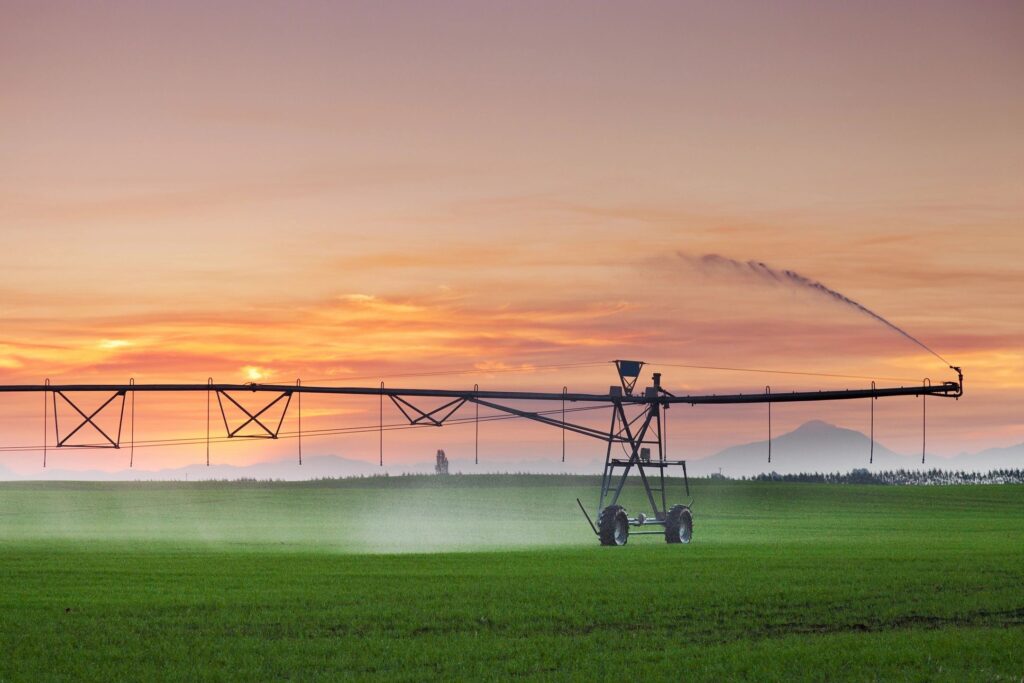
ATLANTA – Farmers in Southwest Georgia haven’t been permitted to drill new irrigation wells for a decade due to low stream flows.
But a new grant program funded with federal COVID relief aid promises a workaround for that moratorium that will provide a new source of water for irrigation in the region and thereby help stabilize Georgia’s No.-1 industry.
Gov. Brian Kemp announced a $49.8 million grant award late last month to Albany State University’s Georgia Water Planning and Policy Center. The money – to be matched by $3.7 million in local investment – will fund a plan to drill 242 irrigation wells deep into the region’s groundwater so farmers won’t have to rely on surface water during dry periods.
“We’re not taking water directly from the stream,” Mark Masters, the center’s director, told an audience of farm industry and political leaders last Tuesday at an ag issues summit in Perry. “We’re going to lower aquifers.”
Periodic droughts in Southwest Georgia have resulted in record-setting low stream flows since the 1980s due to the combined effect of land-use choices and climate change, said Gordon Rogers, executive director of Albany-based Flint Riverkeeper.
Two tributaries of the Flint River, Muckalee and Kinchafoonee creeks, have seen flows decrease 50% to 60%, Rogers said. Ichawaynochaway Creek almost dried up during the 2011-12 drought, and Spring Creek went dry completely, he said.
“In the Lower Flint, these low flows are directly connected to agricultural use,” Rogers said. “You can eliminate industry and municipalities in the Lower Flint, and you still see this effect. The big dog is agriculture.”
The state responded to the low flows by slapping a moratorium on drilling new irrigation wells in a 27-county region drawing either from surface water or the Floridan aquifer, which lies closer to the surface than the deep groundwater wells the new program envisions.
“We recognize our current water management approach is a very blunt instrument for dealing with low stream flows,” said Rick Dunn, director of the Georgia Environmental Protection Division. “The new plan will be a more dynamic permitting policy as opposed to the one-size-fits-all approach we’re using now.”
Rogers said the idea of “source switching” has been around for more than a decade. As a result, the scientific research into the viability of the plan already has been done and was simply awaiting the availability of funding, he said.
“It’s a smart move. It will stabilize [water] supplies and make the creeks healthy,” he said. “This is a giant win for Southwest Georgia and a huge step forward in water policy.”
In addition to drilling deep groundwater wells, the new program will feature the development of a Habitat Conservation Plan under the federal Endangered Species Act.
Rogers said adopting such a plan would help protect Georgia from future multi-state “water wars” litigation. Demonstrating the Peach State’s recent successes in water conservation to the U.S. Supreme Court was instrumental in prompting the court to rule in Georgia’s favor last year in a lawsuit Florida filed over the allocation of water between the two states.
“We had data to be able to go to the Supreme Court and say, ‘We’ve done a good job conserving water,’ ” said state Sen. Larry Walker III, R-Perry, chairman of the Senate Agriculture Committee.
The deep groundwater wells will be significantly more expensive to drill and operate than either tapping into surface water or the Floridan aquifer.
But Walker said the additional investment promises to be worthwhile.
“If we’re going to have economic development in Southwest Georgia, the logical place is in expanding farm production,” he said. “If we can open up more areas for production, that’s a way to revive the economy in Southwest Georgia.”
This story is available through a news partnership with Capitol Beat News Service, a project of the Georgia Press Educational Foundation.
